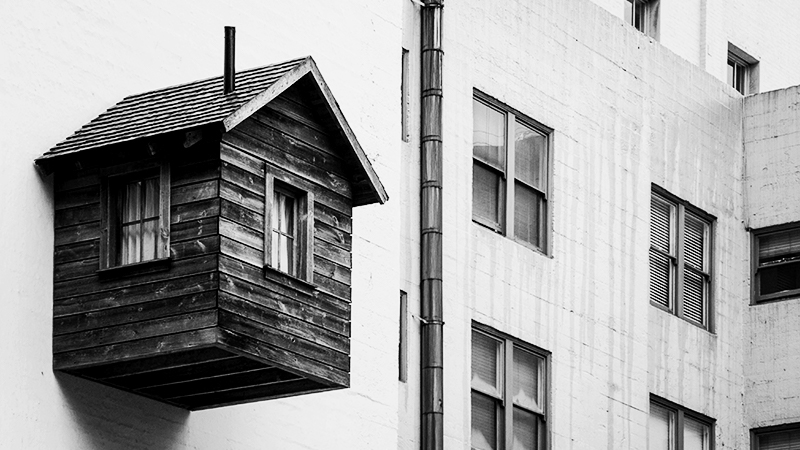
by threshold | Sep 14, 2021 | Creative, Design, Marketing
Apartment branding isn’t what it used to be. In just the last five years alone, the landscape of apartment branding across North America has adapted to dramatic fluctuations in the housing market which have led to new innovations in naming, logo development, and brand identity.
As an apartment marketing agency with expertise in naming and branding projects, we’ve had a front row seat to the shifting needs of renters, owners, developers, and asset managers during this time and enjoyed a position at the cutting edge of the branding innovations that these shifts have inspired.
This experience has not only fascinated us, but also empowered above-market results for our clients, and we hope it will do the same for you. So without further ado, here are the key shifts we’ve seen in apartment branding trends across multifamily, student, and senior living markets within the last five years.
Branding Is No Longer an Afterthought
We couldn’t write about the changes in apartment branding trends without first acknowledging that the attention paid to branding has increased. That is to say, not only have the types of branding choices apartment marketers make shifted over time, but real estate creators and managers are also making these choices earlier and with more care than ever before.
Before the pandemic hit, many rental industries were experiencing a boom of new developments, causing increased competition that required developers, owners, and asset managers to focus their efforts on how they would differentiate their new developments from the competition. This also prompted existing communities to up their game to compete with newcomers, which made rebrands more common than before.
Now, even after the effects of the pandemic, the trend of thoughtful branding has continued because it has become the expectation among consumers and apartment marketers alike.
These days, crafting a brand for a new development typically occurs in tandem with the development and tends to inform and be informed by architectural and interior design processes.
More often than ever before, branding involves a careful research and discovery process, professional assistance from an apartment marketing agency, and the creation of in-depth brand guidelines documents to keep the branding consistent and effective over time and across multiple platforms.

Apartment Names are Bolder & More Memorable
Five years ago, you would find many new developments adopting names incorporating the street number of the complex (e.g. AMLI 5350) or a classic two-word formula featuring words like “Estates,” “Pointe,” and “Vista.” Nowadays, you still see plenty of those formulas being used, but more often, apartment brands are breaking the mold in favor of unique and memorable names that might have felt too bold just a few years ago.
For example, apartment marketers often eschew the familiar in favor of the unique so that brands feel “iconic” instead of “traditional.” Instead of “900 West,” or “Clinton Gardens,” new developments are more likely to be dubbed “NTX,” “Lumen,” or “Mosaic.” Also increasingly common are anthropomorphic names that instantly inject a sense of personality into a community, like “Emara,” or “The Guthrie.”
This trend is particularly true in student housing, where it’s generally understood that Gen Z prospects will overlook the boring and traditional. However, student housing does not have a monopoly on this trend. Even senior living brands are becoming more bold and adventurous, especially as we see a surge in Active Adult communities that emphasize an active lifestyle and resist the narrative of “slowing down” in their retirement-aged residents.
Sustainability & Social Responsibility Have Taken Center Stage
Climate change, racial justice, and public health have all taken center stage in the public zeitgeist, causing renters to pay increased attention to how their housing choices play a role in these factors. Especially among Gen Z and Millennial renters, green living, inclusive marketing, and public responsibility have become important factors in determining whether a brand resonates with them enough to make it into the consideration phase of their renter journey.

Apartment communities new and old have responded to these priorities by incorporating names, taglines, colors, textures and patterns, and brand voices that underscore themes of responsibility, cleanliness, sustainability, and inclusion. For example, brands looking to resonate with eco-conscious renters are adopting greens and blues in the brand colors or incorporating organic elements like plants and animals into their logos.
Student Housing Brands are Ruled By Gen Z Sensibilities
With the oldest Gen Zers now twenty-four years old, student housing has spent the last five years adjusting to the priorities of this generation of renters. That means student housing brands are emphasizing technology, social media presence, sustainability, and affordability more than they were when Millennials were their target audience.
How To Get More Leads & Leases from Gen Z Renters
For example, today’s student housing brands are incorporating messaging that emphasizes “an option for everyone” rather than “exclusive amenities” or “upscale living.” Of course, luxury student apartments are still being built, but even these communities are often leveraging themes of inclusion and attainability in their brand messaging and imagery in order to avoid the impression that they are catering to the wealthy few rather than to the millions of Gen Z renters who came of age during an economic recession and enjoy less public funding for their tuition than any generation before them.
Multifamily Housing Brands are Ruled By Millennial Sensibilities
While the oldest Zoomers are becoming renters in multifamily communities, the largest group of multifamily renters is still the Millennials. Many of these 20 and 30-somethings are experiencing fledgling careers (often changing jobs every two years or so), new parenthood, and mountains of student loan debt, which is making affordable housing, spacious apartments, family-friendly amenities, and work-from-home opportunities more attractive than ever.
Multifamily communities are responding to these needs by emphasizing how their apartments support residents’ careers, families, and physical health while providing an excellent overall value. As with student housing, luxury multifamily housing is still being developed, but the sense of luxury is often communicated through the highlighting of work-from-home conveniences, more spacious interiors, state-of-the-art fitness facilities, and convenient lifestyle perks like housekeeping services, pet grooming, and other factors that make adult life a little bit easier.
Senior Living Brands are Adjusting To The Active Adult Housing Boom
Senior living was once considered only in terms of Independent Living, Assisted Living, and Memory Care facilities, but that’s no longer true. These days, new senior living developments are more likely to be Active Adult communities than the “retirement homes” of yesteryear. This new trend appeals to Boomers and older Gen Xers who are ready to downsize after becoming empty nesters or reaching retirement age, but who are not interested in “slowing down.”
How Senior Living Is Changing
These generations of seniors are redefining what it means to be “old,” and showing apartment marketers how much seniors have been subject to limiting stereotypes and lackluster housing options in the past. It’s no wonder that the Active Adult sector has seen such a boom within the last decade, prompting the senior living industry as a whole to incorporate themes of adventure, discovery, activity, and connectedness in their branding.

by threshold | Feb 15, 2017 | All, Marketing
The demand for creative residential marketing ideas for apartments is higher than ever in this saturated market. After all, the seven year luxury apartment boom may finally be ending. U.S. apartment rental rates have increased 26% since 2010, however, rents only grew by 3.8% in 2016 compared to 5.6% growth in 2015. Furthermore, the Commerce Department has released figures that suggest fewer newly-constructed apartments being rented out this year than last year. In short, rent prices have stopped skyrocketing and new developments are slowing down.
Differentiation is more important than ever in a saturated market. In Threshold’s many years of experience in residential marketing, however, we’ve learned that differentiation is an easily misunderstood concept. Differentiation is not just a unique amenity or industry-first service offering. Differentiation is answering the question, “Why would your ideal resident choose your property over the property down the street?”
Some communities try to differentiate by offering services like bike repair, tanning beds, and even dog washing areas. While the overall service and amenity offering is important at any apartment community, it’s unlikely than any one amenity will convince someone to choose your property over the competition.
Differentiation is as much about identifying your target audience as it is about having a unique marketing message. Here at Threshold, we work with many different residential industry clients and as a result, we end up creating marketing collateral for many different audiences.
When crafting a marketing strategy for senior living communities, we must consider both the potential resident and their child who is often the final decision maker. The same holds true for student housing, though the audiences are obviously vastly different. It’s vitally important in that industry to create messaging that speaks to Generation Z students, but to not do so in such a manner that we alienate the parents who are actually paying the student’s rent.
Multifamily housing presents a different challenge altogether. In that case, the potential resident is also the decision maker, but that person could be anywhere between 22 and 70 years old. Marketing to millennials is just as important as marketing to empty-nesters, and we often have to accomplish both using the same messaging, design and marketing collateral. Advancements in apartment digital marketing tools have helped target specific audiences, but market research and understanding the client’s property is still just as important.
Differentiation doesn’t happen just because your property has the biggest pool in the market or the lowest rent. Differentiation happens when your property is properly positioned—through strategic messaging and design — to fill a gap in the market. Threshold has positioned over 3,300 properties during our combined 242 years of residential experience. Here are a few examples of positioning the client’s property as filling a gap in the market:
- The no-frills, affordable apartment that still offers a hint of luxury.
- The place to gather for a diverse community of young professionals
- The rustic living space in an urban environment
- The senior living community that helps residents maintain an active lifestyle
- The student housing community closest to campus
- The student housing community that doesn’t feel like student housing
As you can see, positioning can be as simple as a location or as complex as a lifestyle promise. Of course, each of these positioning statements requires many hours of research and competitive analysis. In the end, by identifying the target audience and comparing the client’s property to the competition, we’re able to find the differentiation opportunity. It then becomes a matter of crafting the messaging, digital campaigns and residential marketing collateral that best speaks to the primary differences between your property the one down the road.

by threshold | Feb 1, 2017 | All, Marketing
A recent survey of 2,352 marketers revealed that content marketing and big data are expected to be the two biggest marketing trends in 2017. We say trends, but these two residential marketing tools are going to be around for a long time. The truth is, property managers can no longer expect to drive digital traffic or foot traffic with advertising alone. The market is so saturated and the competition is so fierce, brands need to provide something of value before they can expect to receive any customers. That’s where content marketing comes into play.
Effective content marketing is both highly valuable and remarkably difficult to get right. The Content Marketing Institute defines content marketing as, “creating and distributing valuable, relevant and consistent content.” The problem is that the definition of “valuable” changes depending on your property’s target audience, as does the definition of, “relevant.” At Threshold, we combine audience insights from our digital team with copywriting services to create effective content marketing strategies for our clients. Understanding the pool of potential residents is the first step toward developing creative marketing ideas for apartments.
Big data will steer marketing decisions in 2017 in many ways. Modern data measuring tools haven given marketers the ability to accurately measure the success of marketing campaigns, reveal and analyze target audience demographics and target potential customers by filtering through dozens of audience identifiers.
Marketing automation is another digital marketing tool that will drive leases in 2017. Marketing automation can take on many different forms. At Threshold, we developed HOLA (Handy Online Leasing Ambassador) to nurture our clients’ leads from the first point of contact through the signing of the lease. HOLA and other automated marketing tools are much more valuable than simple e-blasts because they’re dynamic. Prospects are funneled into different channels depending on their level of interest and follow-up. Automated marketing systems are especially popular in the residential industry for a number of reasons. For starters, automated systems like HOLA free up the leasing staff to focus on in-person leads and community tours. Secondly, marketing automation can be used to build and maintain digital relationships with current residents, increasing the likelihood they’ll renew.
Geo-specific mobile marketing is another way to increase leads and draw residents away from your competition. Everyone carries a GPS in their pocket these days, which makes marketing to millennials a whole lot easier. Savvy residential marketers are now able to use smart phone location functionality to target prospects within a certain geographical location. We take advantage of this in a couple ways here at Threshold. First, we use geo-targeted advertisements to display a client’s mobile ads to prospects who happen to be near that client’s property. The other method is to target residents who currently lease from the competition. Geofencing allows us to define areas as small as a single building (like the other luxury apartment building down the block) in which to display mobile advertisements. Hey, it’s a competitive world out there.
If your properties don’t have the latest apartment digital marketing tools, contact Threshold today and let’s get your property on the path towards 100% occupancy.
by threshold | Jun 18, 2015 | All, Marketing
Signs, signs, everywhere there’s signs. They direct us. They educate us. They speak to us and they inspire us to make decisions. You might think using signage for your business or property is too expensive, do you know your options? Do you know how to make that signage pop? Grab eyeballs? Turn heads? We do at Threshold Agency….
Here’s the scoop from an industry perspective. The U.S. Small Business Association reports that “on-premise signage is the most effective form of advertising.” You might consider some exterior signage on your property to be an old school approach or even lackluster, but consider this…it is 24/7 advertising at a one-time cost. Seems obvious, right? Welcome to the world of possibility and sign spotting in residential marketing.
With the right partner agency, your approach and design can increase your presence in the market and even more importantly the foot traffic into your leasing center! Some of our signage options may not be new to you, but they are they competitively priced for any budget. Our design approach is all about building your brand.
Cheap yard stake/bootleg/bandit signs. Yah, we said it. You’ve seen them, simple bandit signs that at the property across the street, next door, down the road and sprinkling roadsides everywhere. They just got you to notice them. Never underestimate the simple, easy tools of the trade. These signs are a cost effective approach to reaching prospective residents daily. Now, what if you want to stand out amongst the crowd? What is a way to be unique and show personality? How do you make the leap from simple to innovative? We challenge you to step out of the constraints of the rectangle (notice we didn’t say box) and show you have personality. Take the simple bandit sign size and try adding some fun; have them cut into shapes. BAM! You’ve just stepped up your game and started building your brand. With the current emoji craze in full swing, why not add some humor and personality to that message? Rather than saying your community is pet friendly on a rectangle sign, say it on a paw… “Monthly Yappy Hour.”
You’ve got great eye-catching signs, but what if the passerby isn’t quite ready to commit? Hit the refresh button! Commuting is routine and often the sights that remain the same over extended periods of time are glanced over. Think curb appeal, you change the landscaping; change your signs. Seasonal colors or adding dimension can add enough change to stay…well, refreshed! That’s why updating your exterior signage is crucial. It keeps the drivers/walkers/cyclist engaged.
Did you notice we threw in the word color? Do you know that you can use color to communicate to your market? While honoring your branding, we can introduce colors that some researchers say evoke more response from viewers. Does the property next door have security problems? We would consider adding blue to your signage because blue conveys trust. Is it summer and you’re in that last leasing push, yellow induces impulse. Do you have more amenities than your neighbor? That alone makes your property more exciting then the competitors? Hello RED! BAM!
Finally, we suggest adding the option we fondly call ol’ faithful…the vinyl banner. Updating the art, messaging and color approach also applies to banners. Their advantage is well, their real estate, yes we just made a funny. Seriously, they have a larger surface area for more information as well as lifestyle or property images. The key with ol’ faithful is installation. Often we see banners with wrinkles and sagging sections. It’s so important to get this right. First impression of your property is priceless. Having it installed correctly shows prospects you take care of your community. You will take care of them. You just signed another lease. Yes, that was another funny! #GoThresholdorGoHome
Get seen.
by threshold | Oct 9, 2014 | All, Design
My elementary art teacher, Ms. Weinstock, used to tell us “pictures are worth a thousand words.” At the time I thought she was a little whacky, pictures didn’t have any words in them, after all. But, as the studious student who wanted to impress I tried my best to draw the world around me…or, at least the fruit in the bowl.
That lesson has come back to me so many times over the years. Not so much because I have amazing illustration skills, I do not, but because I have heard myself say those same words to clients over the years. Pictures are worth a thousand words. As designers and expert residential brand developers, we like to use as few words as possible to express the lifestyle that our clients are building for their future residents. When a community is new, selling dirt is tough. Imagine doing that in the plains of Lubbock – dusty. Any way, the point is that in order to paint a picture in someone’s mind, you have to use illustrative words, many of them, in fact. But a sharp rendering, a photo-realistic image, sells the lifestyle without a spattering of type on paper.
Investing in very good renderings pays off in terms of brand development and establishment, leasing velocity, and, of course, your NOI.
Ms. Weinstock really was a brilliant teacher. I’m glad she taught me that important phrase, even if it didn’t improve my illustrative skills. Some talent you’re born with. Some you develop over time.
Happy Marketing!






